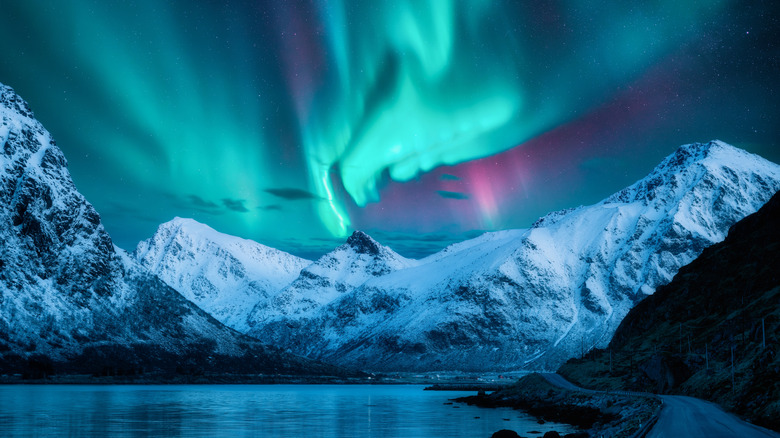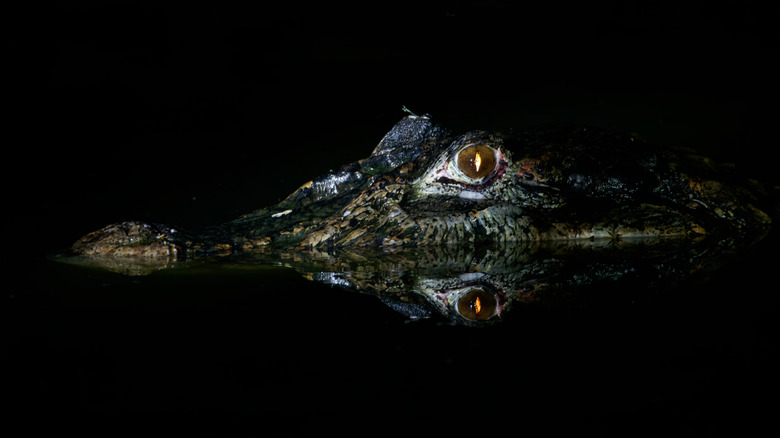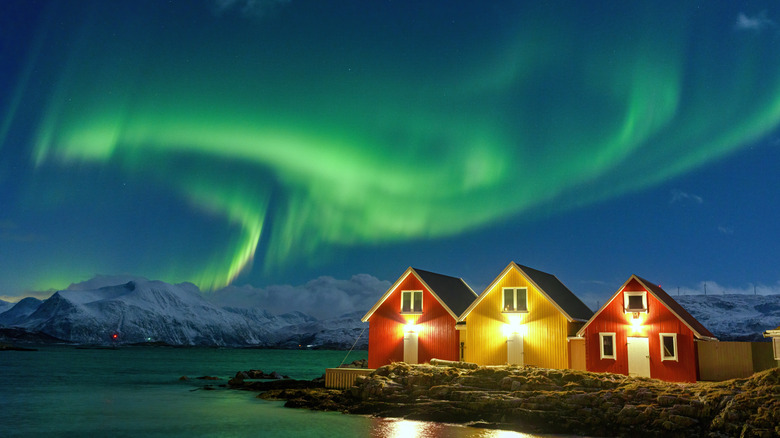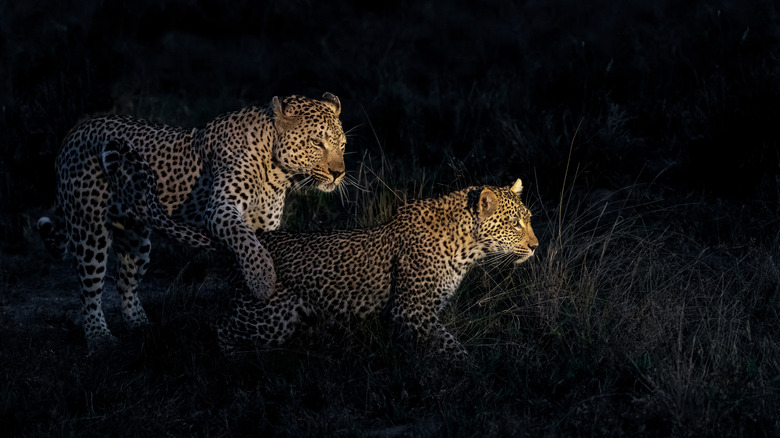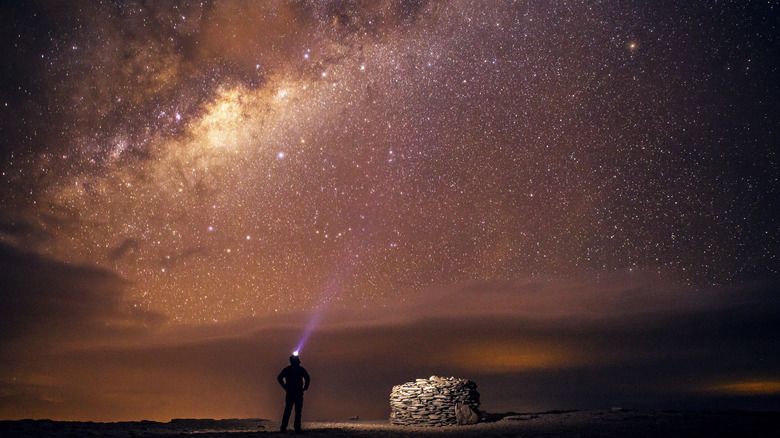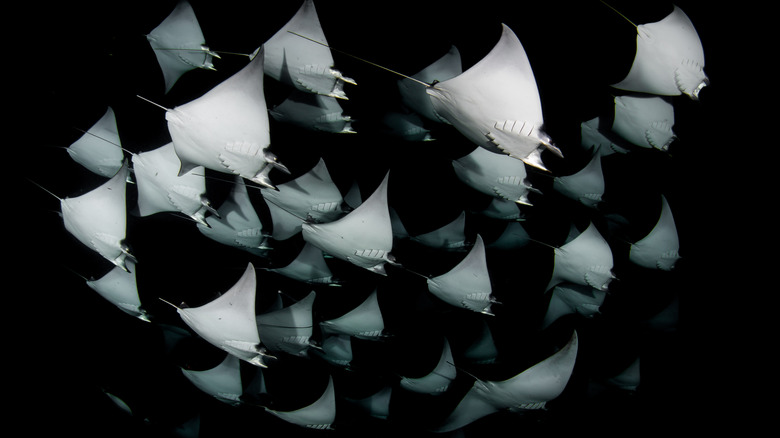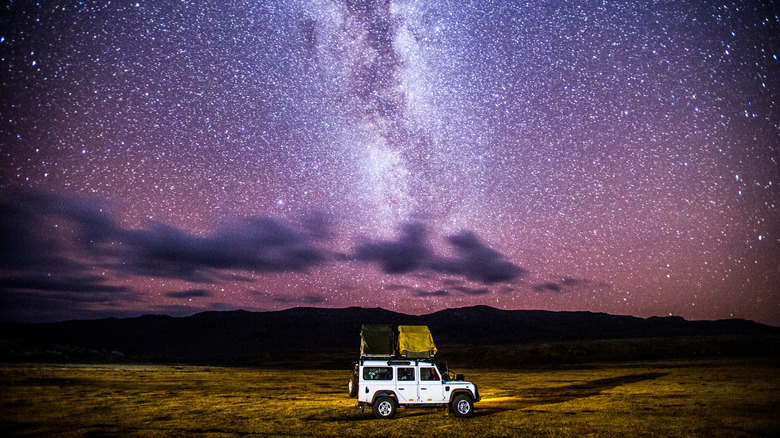'Noctourism' Is The Next Big Travel Trend. Here Are The Top Destinations For Nocturnal Sightseeing
The Earth shifts under dark. Natural phenomena form, cacophonic animal calls ring through the forests, and every rustling leaf becomes a cause for intrigue. More and more travelers are seeking out this new world of nocturnal experiences, pushing it to the top of Booking.com's predictions for 2025 travel trends. It has been dubbed "noctourism" — the experience of taking after-dark excursions while traveling and choosing destinations based on their nighttime adventures. Join the nearly two-thirds of Booking.com's audience planning nocturnal tours in 2025 and head to one of the top destinations for sightseeing after dark.
Spanning across five continents, these top late-night excursions immerse explorers in nature, with the cover of the night offering an entirely new perspective to classic experiences. Take cautious steps over a pitch-black jungle floor or swing a flashlight in search of prowling eyes in the African savannah. Dive into ocean depths and be encircled by schools of gentle rays. See new animals emerge from the Amazonian depths as darkness falls and watch as the sky is stained celestial green or a galactic gleam. Experience the seemingly perpetually periwinkle twilight of the Arctic winter, or huddle atop the world's second-highest mountain plateau to watch a master artist paint a fresco of stars across the Andean sky. You can get a whole new perspective on your favorite destinations by planning to take a tour after dark. Experience spectacular natural phenomena and thrilling wildlife encounters on one of these Islands-tested nighttime excursions.
Explore the depths of the Amazon alongside its nocturnal residents
There is no such thing as silence in the Amazon Rainforest. You can watch the dense thickets be engulfed by the dark of night from your camp or lodge on the Amazon banks. Hear the croaks of minuscule neon frogs reverberate around the trees, the screech of owls, the flap of bat wings, the slither of snakeskin over leaves or wound around a mighty trunk. Experiencing the full breadth of Amazonian wildlife requires a nocturnal adventure.
Take a tour from the world's largest city inaccessible by land, a vibrant gateway to the Amazon River, choosing an option that includes an overnight stay. You'll be roused from your rest to head back out onto the water or into the forest, following an expert wildlife guide and spotter. If you choose to dive deeper into the jungle on foot, watch where you're walking. Scuttling tarantulas emerge from their burrows, and praying mantises occupy the footpaths. Poison dart frogs peer bug-eyed from the barks that fringe the trails, and owl monkeys are active on the canopies.
If you opt instead to take a water-top tour after the fall of night, your motorized canoe will have to shut off its engine. Gliding over the murky surface of the Amazon River is the only option after dark, lest you disturb the predators lurking in the reeds. The night is the best time to spot black caimans. Though they grow to 13 feet in adulthood, larger than any other member of the alligator family, experienced guides can still scoop the miniature younglings from the waters to allow visitors an up-close view of the apex amphibious carnivores.
Chase celestial spectacles on a Norwegian northern lights tour
Drenched in snow from fall through spring, the golden light of life in the Norwegian city of Tromsø glows hazy through the freeze. That warm gleam pales under the technicolor skies. Situated in prime position on the northern lights belt, the area that wraps around the Earth's northernmost point housing the best destinations in the world to view the northern lights, winter nights in Tromsø are bathed in a green and blue hue.
While lucky travelers may not have to leave the sanctuary of their snow-laden lodge or hotel with views of the northern lights, your best bet for securing a sighting of the aurora borealis is a light-chasing tour. Opting for a bus, minivan, or private car excursion, your route will be guided by meteorological experts and locals with insider knowledge of the best light-washed spots. Keeping an eye for cloudless skies, you'll venture away from any semblance of life and the light pollution that comes with it. These nightfall excursions typically set out after around 9 p.m. and launch into a 13-degree Fahrenheit tundra, where you'll set up traditional Sami lavvu camps in strategic spots.
Only under the blanket of night can lucky travelers witness the eruption of an aurora storm. Alongside your twilight tour guide, watch and wait for a neon explosion to engulf the sky as interweaving glowing green and violet strands of celestial clouds begin to dance. Underlaid by the conical crag of the northern Norwegian mountains and the dramatic ice of the Arctic, you'll see Tromsø's extreme landscape thrown into new light during a night excursion.
Watch the savannah shift overnight in Kenya
Listen to the sound of the savannah shift at dusk in Kenya. Resonating low and slow over the whisps of the long grass, the roar of the leopard hews like an ominous hand saw as night falls. Cackling choirs of hyenas chatter their melodic song, snickering as the pack surrounds its prey. The bellows of harrumphing hippos and the chorusing tune of the African bullfrogs are punctured by the blood-draining screams of the diminutive hyrax. The savannah never sleeps, so your safari tour shouldn't either.
Take a night drive from your Kenyan safari camp or luxury African resort for the full wilderness experience. While the Maasai Mara National Reserve draws more substantial crowds to the Kenyan savannah, there's actually another option with far fewer crowds just northwest of the famous reserve. Visit Olare Motorogi Conservancy to explore 35,000 protected acres of the African Great Plains. Inhabited by the native Maasai tribe, who directly benefit from the local tourism, and small boutique campsites and luxury lodges, you won't find the typical safari crowds jostling for a front-row seat to the nightfall spectacle.
Organizing a night drive through your camp or lodge, you have a good chance of spotting big cats like leopards and lions, gorging on their day's kill or lounging under a ceiling of stars. Watch out for hippos leaving their cool riverbeds as the sun's heat dissipates, gaggles of hyenas congregating, and nocturnal residents like vicious honey badgers and elusive caracals. You can leave behind your jaunty safari hat, as there's no fear of UV rays on a night drive, but if you're serious about animal scoping, add a pair of nocturnal binoculars to your pack. These night vision specs allow you to witness wildlife undisturbed by the bright lights of the touring Jeeps.
Witness the galaxy alight in Chile's Atacama Desert
Distinguishable constellations, oceans of twinkling stars, and the tumbling Milky Way are swathed over the Atacama Desert at night. A sprawl of jagged cliffs and bursting geysers across the soaring Andean Plateau, the Chilean marvel is no stranger to spectacular scenes. With sections that sit at an equitable altitude to Everest basecamp, the staggering height at which the desert sits puts travelers up close and personal with the cosmos. Drier than Death Valley, neither humid air nor common clouds mar the view of the sky. Just over 60 miles from the nearest small city, no light pollution dulls the shimmer of the stars. Combined, the Atacama's conditions make it one of the best dark-sky destinations on earth. Once the high sun plunges beneath the Pacific horizon, you should set out on a star-bathed excursion.
Find a base in San Pedro de Atacama, situated on the edge of one of the world's most awe-inspiring landscapes, the Valle de Luna. From the small desert town, you can arrange a nighttime tour with an expert astronomer who will talk you through the constellations visible with your naked eye and teach travelers to identify dwarf galaxies and spy supernova remnants. Scattered with rarely sighted celestial objects, the Atacama skies can be enjoyed without any extra aid, but curious travelers can also visit several tourist-friendly observatories. Try to arrange your stargazing expedition on your first day in the desert — tours are occasionally rearranged to accommodate for weather conditions, so this will give you more flexibility to try again another night.
Get a new perspective on the darkness of the depths in La Paz, Mexico
Even if there was light to shed on the midnight sea, it would be occluded by the swarms of rays that float near the surface of the Mexican coast in La Paz, just a two-hour drive from popular vacation spot Cabo San Lucas. Enormous gatherings of mobula rays congregate each evening near the town, scouting out their preferred meal of the plankton that are attracted to the night lights illuminating the sea floor. Every spring and winter, the rays migrate en masse to the Baja Californian coast to find their mates, forming a fever of gliding giants. While taking a scuba excursion from Isla Espíritu Santo yields rare wildlife sightings at any hour, a night dive offers explorers a whole new perspective.
Qualified and experienced scuba divers can join an after-dark, two-tank diving tour, seeking out the largest schools of the protected rays. Accompanied by the curious baby sea lions that assume the responsibility of scoping out the nighttime divers, you'll plunge into the Baja depths and pause, stationary, at 20 to 30 feet. At this point, your guide will sear through the dark depths with a bright light, attracting the plankton that the rays will arrive to gorge on. Their dinner shimmers, the plankton turned bioluminescent and scattering an azure sparkle across the otherwise pitch-black surrounding sea.
Methodology
To determine which noctourism destinations to highlight in this piece, the author based their decision-making on their own travel experiences. These personal recommendations were then supported by research into each destination, including options that had a significant number of after-dark tours available to book through reliable agencies. This selection was designed to spotlight a balanced variety of nocturnal nature activities, giving options with and without wildlife interaction and representing destinations from different continents. Nature experiences were prioritized so as to alleviate travelers of the need to plan their travel calendars around specific festival dates or cultural activities that can't be experienced year-round. Working within these criteria, the list was whittled down to five extraordinary noctourism options.
Noctourism was distinguished as a key travel trend for 2025 due to 62% of Booking.com's surveyed travelers considering a visit to dark-sky destinations. According to its data, 62% reported an interest in starbathing, 59% in star guides, 59% in once-in-a-lifetime cosmic events, and 57% in constellation tracking. With more than 54% planning night excursions to beat the daytime heat and 61% responding that they were concerned about their exposure to UV while traveling, it tracks that more than half of those surveyed plan to engage in evening and night activities in 2025. The term noctourism has also seen a spike in online searches since the beginning of 2025 and has been covered by many major outlets, distinguishing it as a significant travel trend.
